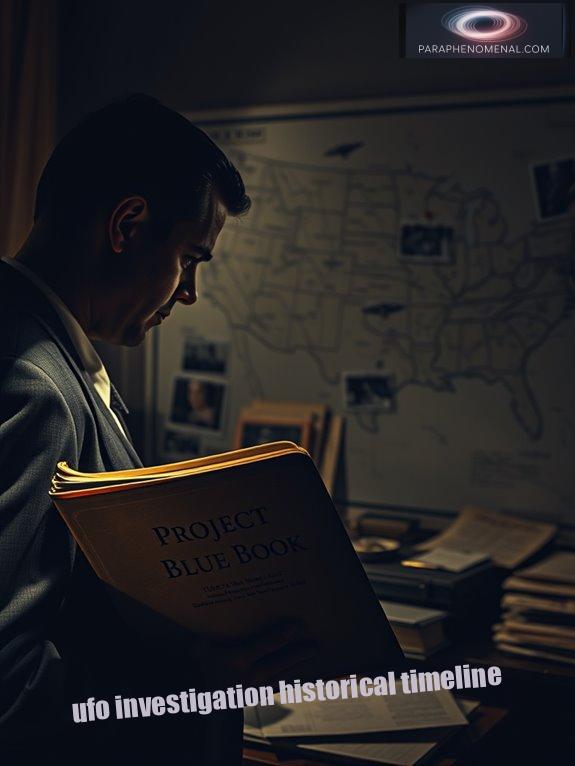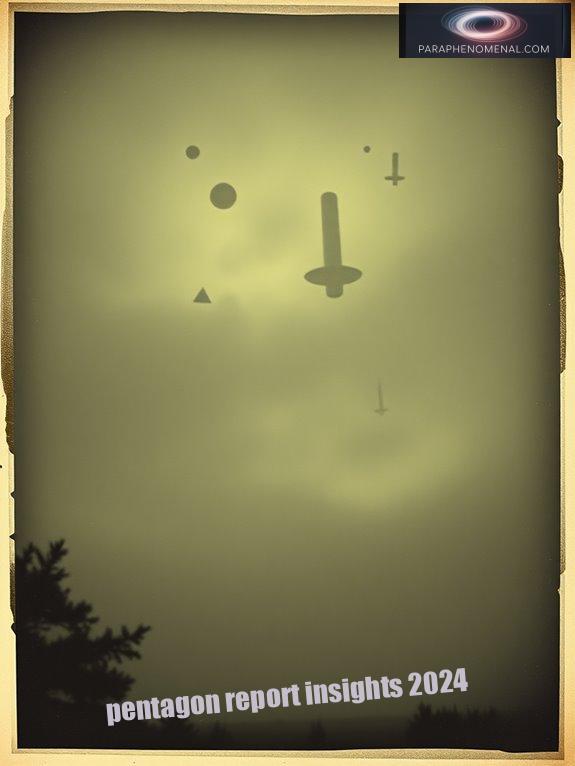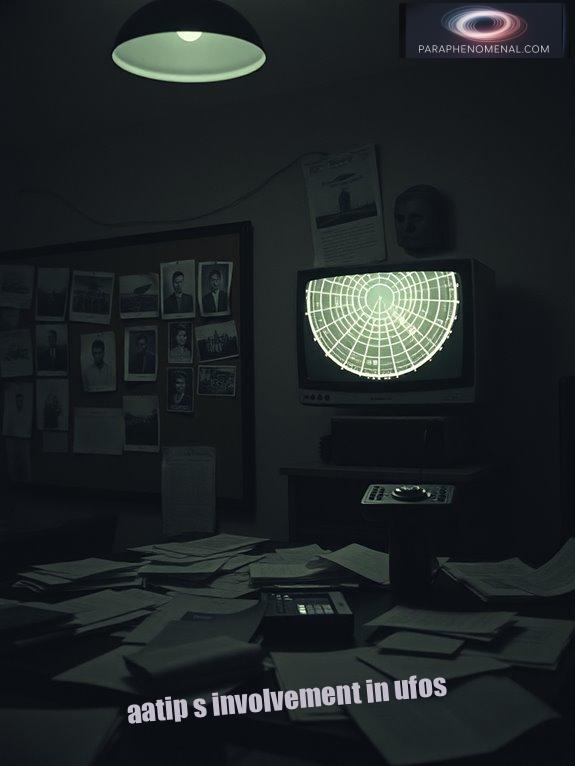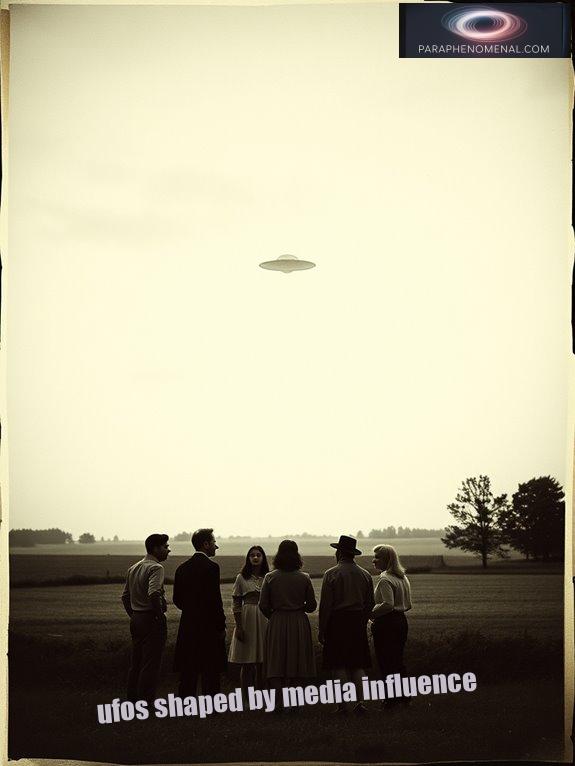Have you ever looked up at the night sky and wondered what lies beyond our understanding?
The U.S. government's recent UFO findings have stirred my curiosity.
In just a year, the AARO reported 757 sightings of unidentified aerial phenomena, with 21 still shrouded in mystery.
I find it fascinating that many incidents occur near sensitive military sites.
The push for transparency is exciting, too! New legislation aims to protect whistleblowers while sharing more information.
Could these investigations reshape how we view the universe?
There's so much to explore!
A Personal Encounter with the Unexplained
One evening, while camping in the mountains, I witnessed a strange light darting across the sky.
It moved unlike any aircraft I knew.
The experience left me questioning the limits of our reality.
I remember sharing this story with fellow enthusiasts, sparking debates about extraterrestrial life, government cover-ups, and the mysteries of the paranormal.
This encounter ignited my passion for investigation and exploration of the unknown.
Could there be a connection between these experiences and the UFO reports we hear about?
Quick Takeaways
- The AARO received 757 reports of UAPs between May 2023 and June 2024, with 21 incidents remaining unexplained near national security sites.
- AATIP, funded by the U.S. Defense Intelligence Agency, focused on assessing UAP as national security threats from military personnel encounters.
- Recent legislation promotes transparency in UFO research and aims to protect whistleblowers and declassify related documents.
- NASA's panel is working to gather data on UAPs and reduce stigma surrounding the phenomena.
- Public interest in UFOs is heightened by credible witness testimonies and media coverage, despite concerns over misinformation and sensationalism.
Historical Overview of UFO Investigations

While exploring the historical overview of UFO investigations, I find it fascinating how the journey of understanding unidentified flying objects has evolved over the decades.
Starting in 1946, sightings of "ghost rockets" in Europe raised concerns about possible Soviet threats. The excitement really took off in 1947 when Kenneth Arnold's sighting near Mt. Rainier popularized the term "flying saucer."
By 1950, British media buzzed with stories, prompting the establishment of secret committees to investigate. Notably, the first wave of flying saucer sightings occurred in the USA, which significantly contributed to the public fascination with UFOs. During this time, military personnel began to report their own encounters, leading to the creation of systematic investigations like Project Blue Book.
In 1950, the British media ignited curiosity, leading to the formation of clandestine committees dedicated to UFO investigations.
The U.S. Air Force launched Project Blue Book in 1952, collecting over 12,600 reports until 1969.
These events shaped public curiosity and concern, which is why we created ParaPhenomenal—to explore and understand the mysteries that captivate our imagination about UFOs.
Key Findings From the Pentagon Report 2024

The Pentagon Report for 2024 reveals significant updates regarding Unidentified Aerial Phenomena (UAP), particularly with the All-Domain Anomaly Resolution Office (AARO) receiving 757 reports between May 2023 and June 2024.
Of these reports, 485 occurred during this period, while 272 were from previous years. Notably, the government's investigation into these sightings has intensified, reflecting a growing interest in understanding UAP.
Common shapes reported include orbs, cylinders, and triangles, with about 4% described unusually, like a "green fireball." ABC News features video content related to news stories, which may include discussions on these UAP findings.
Twenty-one incidents remain unexplained and require further investigation, especially since they occurred near national security sites and were recorded by sensors or multiple eyewitnesses.
AARO aims to analyze UAP sightings rigorously, ensuring transparency and collaboration.
As we explore these mysteries on ParaPhenomenal, we seek to understand what lies beyond our skies.
The Role of AATIP in UFO Research

AATIP, or the Advanced Aerospace Threat Identification Program, emerged in 2007 with a clear mission: to investigate Unidentified Aerial Phenomena (UAP) and assess potential national security threats.
Funded with $22 million over five years, AATIP was initiated by the U.S. Defense Intelligence Agency, with notable support from Senator Harry Reid.
Though officially ending in 2012, research continued informally. The program focused on collecting reports, particularly from military personnel, about UAP encounters. AATIP's status remained ambiguous after 2017 acknowledgment, suggesting ongoing interest and activity from the government regarding UAPs.
AATIP employed innovative techniques, leveraging radar tracking, infrared technology, and eyewitness accounts. It also funded various studies on advanced aerospace topics, contributing invaluable understandings.
At ParaPhenomenal, we aim to explore these findings further, shedding light on a topic that captivates many seeking truth and transparency.
Transparency Efforts and Public Interest

How can we truly understand the changing landscape of UFO research and public interest?
The House Oversight and Accountability Committee has pushed for transparency in UFO research, aiming to lift the veil of government secrecy. Recent legislation seeks to protect whistleblowers and declassify UFO-related documents, highlighting a growing demand for accountability. The establishment of the All-domain Anomaly Resolution Office (AARO) aims to standardize data collection, addressing public concerns. Yet, despite these efforts, the government's continued secrecy fuels speculation, which has been exacerbated by government UFO studies that often lack clear communication to the public.
Public interest in UFOs has surged, especially with high-profile testimonies from credible witnesses, including those from former military personnel. This growing fascination drives our mission at ParaPhenomenal, as we endeavor to provide clarity in a domain shrouded in mystery.
Transparency remains essential for national security and our collective curiosity.
Investigative Agencies and Their Functions

Several key investigative agencies play essential roles in understanding and addressing unidentified aerial phenomena (UAPs).
The Department of Defense leads national security efforts and recently formed the All-domain Anomaly Resolution Office (AARO) to investigate UAPs more effectively. The Office of Naval Intelligence previously hosted the Unidentified Aerial Phenomena Task Force, which standardized UAP sighting reports. AARO serves as the DoD focal point for all UAP-related activities, ensuring a coordinated approach across the government.
NASA has established a panel focused on gathering data while reducing stigma around UAPs. Meanwhile, the National Archives will house a repository of UAP records for public access. The CIA, historically involved in UFO studies, continues to contribute to the discourse.
These agencies work together to collect data, analyze findings, and guarantee transparency, strengthening our understanding of these extraordinary phenomena, which is why we created ParaPhenomenal.
Media Influence on Public Perception of UFOs

The way media covers UFOs markedly shapes how the public perceives these mysterious phenomena.
When sensationalized stories hit the headlines, they often spark skepticism and fear, lacing the narrative with uncertainty. On the flip side, objective reporting fosters trust, allowing the public to engage with the subject more openly. Government UFO disclosures significantly influence public perception, as they add credibility to reports and validate witness experiences. Recent studies show that public perception of UFO sightings is increasingly leaning towards scientific inquiry, reflecting a growing interest in understanding these phenomena.
I've noticed that credible sources elevate interest, especially as we shift from "UFO" to "UAP," aiming for a scientific dialogue rather than conspiracy.
Social media amplifies these dynamics, spreading beliefs and theories quickly, sometimes distorting reality.
As we explore these topics on ParaPhenomenal, it's essential to critically evaluate information, recognizing how media influences our understanding and feelings about UFOs, and ultimately, our perception of the unknown.
References
- https://www.cbsnews.com/news/pentagon-ufo-uap-report-full-text-march-2024/
- https://www.wwno.org/2023-11-14/ufos-and-the-u-s-government-the-push-towards-greater-transparency
- https://en.wikipedia.org/wiki/Investigation_of_UFO_reports_by_the_United_States_government
- https://ivypanda.com/essays/united-states-government-should-release-more-ufo-information-to-the-public/
- https://www.pbs.org/newshour/politics/pentagon-study-finds-no-sign-of-alien-life-in-reported-ufo-sightings-going-back-decades
- https://www.historyextra.com/period/modern/brief-history-ufos-ufo-top-sightings-timeline/
- https://www.space.com/ufos-uap-history-sightings-mysteries
- https://penntoday.upenn.edu/news/digging-government-report-ufos
- https://sgp.fas.org/library/ciaufo.html
- https://abcnews.go.com/Politics/pentagons-ufo-report-finds-700-new-cases-21/story?id=115878401

Leave a Reply